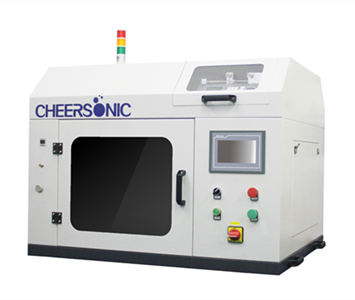Fuel cell type
Fuel cells are classified according to their operating mechanism and can be divided into acid fuel cells and alkaline fuel cells.
Fuel cells are classified according to the types of electrolytes, including alkaline fuel cells (AFC), proton exchange membrane fuel cells (PEMFC), phosphoric acid fuel cells (PAFC), and solid oxide fuel cells (SOFC).
Alkaline fuel cell is the fastest growing battery of this technology, mainly for space missions, including aerospace and aviation to provide power and drinking water. The proton exchange membrane fuel cell is composed of an anode, a cathode and a proton exchange membrane. The anode is the place where hydrogen fuel is oxidized. Both poles contain a catalyst that accelerates the electrochemical reaction of the electrode. The proton exchange membrane acts as an electrolyte. When working, it is equivalent to a DC power supply, the anode is the negative pole of the power supply, and the cathode is the positive pole of the power supply. Phosphoric acid fuel cell is a medium-temperature fuel cell with concentrated phosphoric acid as the electrolyte and precious metal-catalyzed gas diffusion electrodes as positive and negative electrodes. It has the advantages of stable electrolyte, concentrated phosphoric acid, low water vapor pressure and the anode catalyst is not easily poisoned by CO. This is a civil fuel cell that is close to commercialization. Molten carbonic acid fuel cell, this kind of battery has high efficiency, but the material requirements are also very high, the working temperature can reach 650 degrees Celsius, which makes it take a long time to reach the working temperature. The solid oxygen fuel cell is an all-solid chemical power generation device that directly converts the chemical energy stored in the fuel and oxidizer into electric energy in an efficient and environmentally friendly manner at medium and high temperatures.
Fuel cells are classified according to fuel types: hydrogen fuel cells, methane fuel cells, methanol fuel cells, and ethanol fuel cells.
The hydrogen fuel cell is a battery that uses hydrogen, the chemical element, to store energy. The basic principle is the reverse reaction of electrolyzed water, which supplies hydrogen and oxygen to the cathode and anode respectively. After hydrogen diffuses out through the cathode and reacts with the electrolyte, electrons are released to the anode through an external load. The methane fuel cell is a chemical power source that uses methane and oxygen as raw materials. The battery uses metal platinum sheets to be inserted into the KOH solution as electrodes, and methane and oxygen are respectively passed through the two poles to convert the chemical energy produced by the reaction into electrical energy. Methanol fuel cells use liquid methanol as fuel, and the core of its power generation is the so-called membrane electrode assembly (MEA). The MEA includes an anode, a cathode and a polymer film that separates the anode and cathode. Ethanol fuel cell industrial production technology is perfect, ethanol is basically non-toxic and easy to store, which is conducive to the construction of gas fuel supply stations.
Ultrasonic Fuel Cell Coating Video
Recommended Machine
UAL100 ultrasonic dispersion liquid supply system
UAM3000 Ultrasonic Bracket Spraying Machine
UAM4000 small desktop ultrasonic spraying machine
UAM4000L Ultrasonic Precision Spraying Machine
UAM6000 Ultrasonic Large Spraying Machine
UAM7000 Ultrasonic Balloon Guide Wire Spraying Machine
UAM8000 ultrasonic assembly line spraying machine

